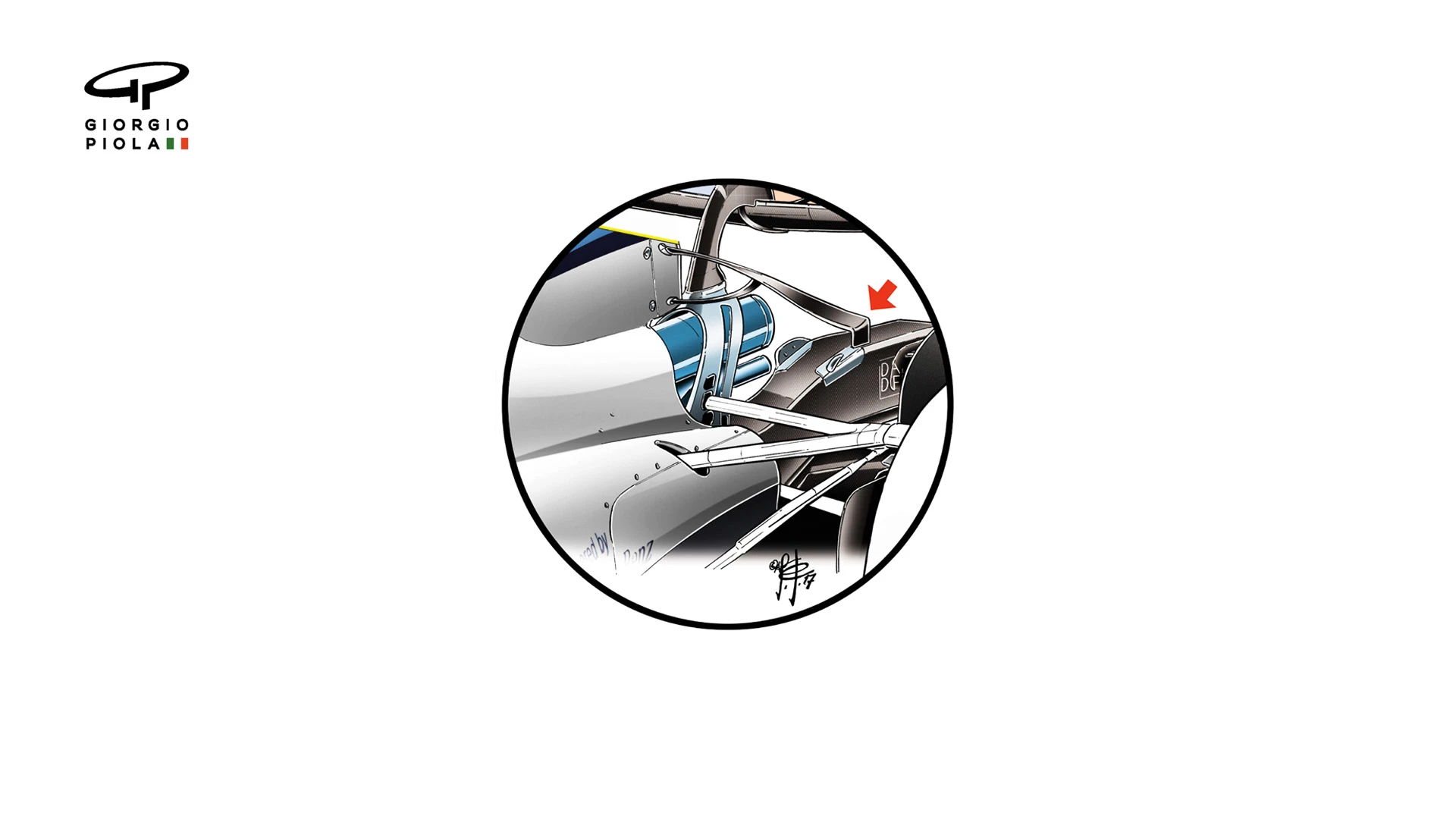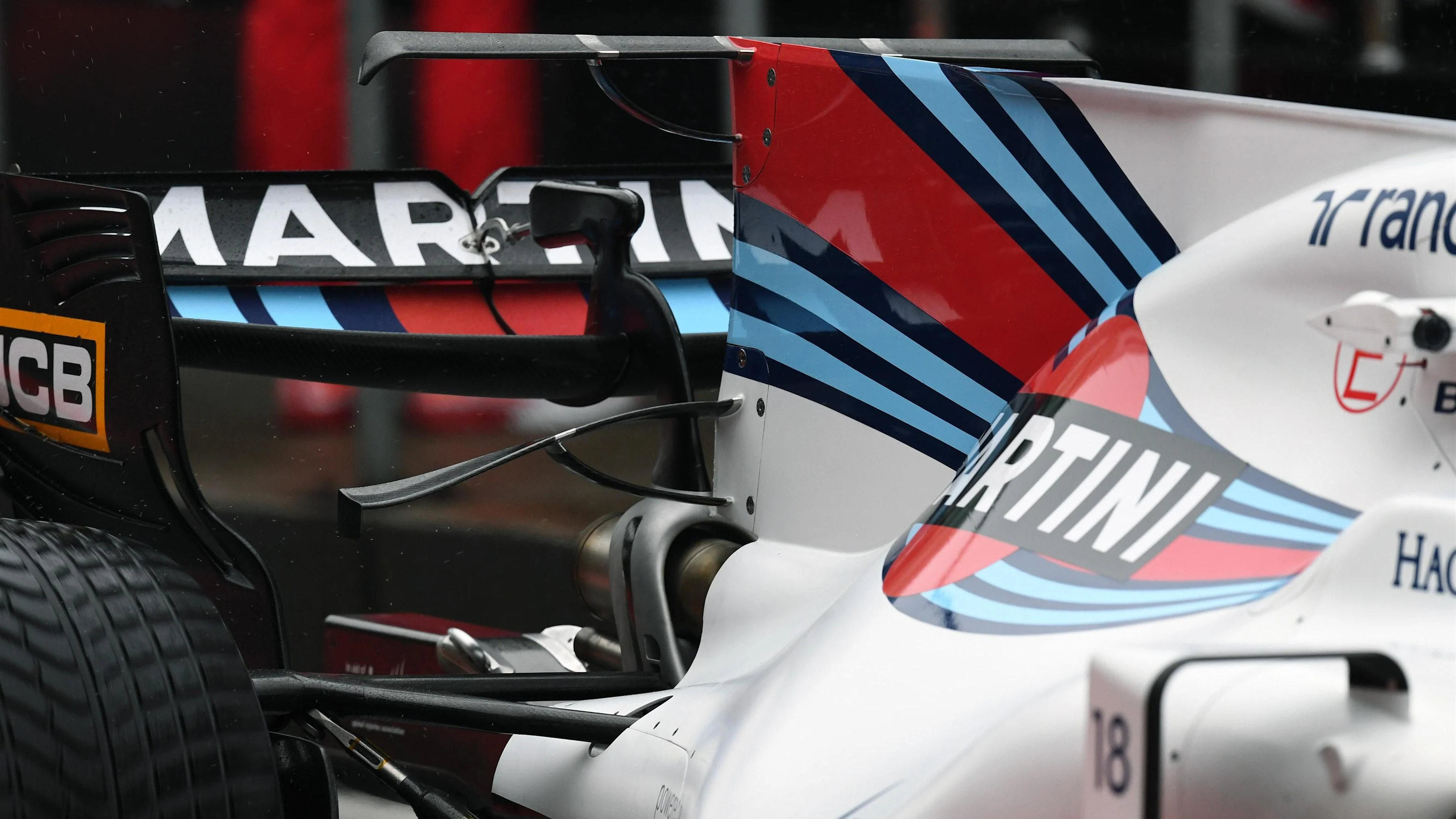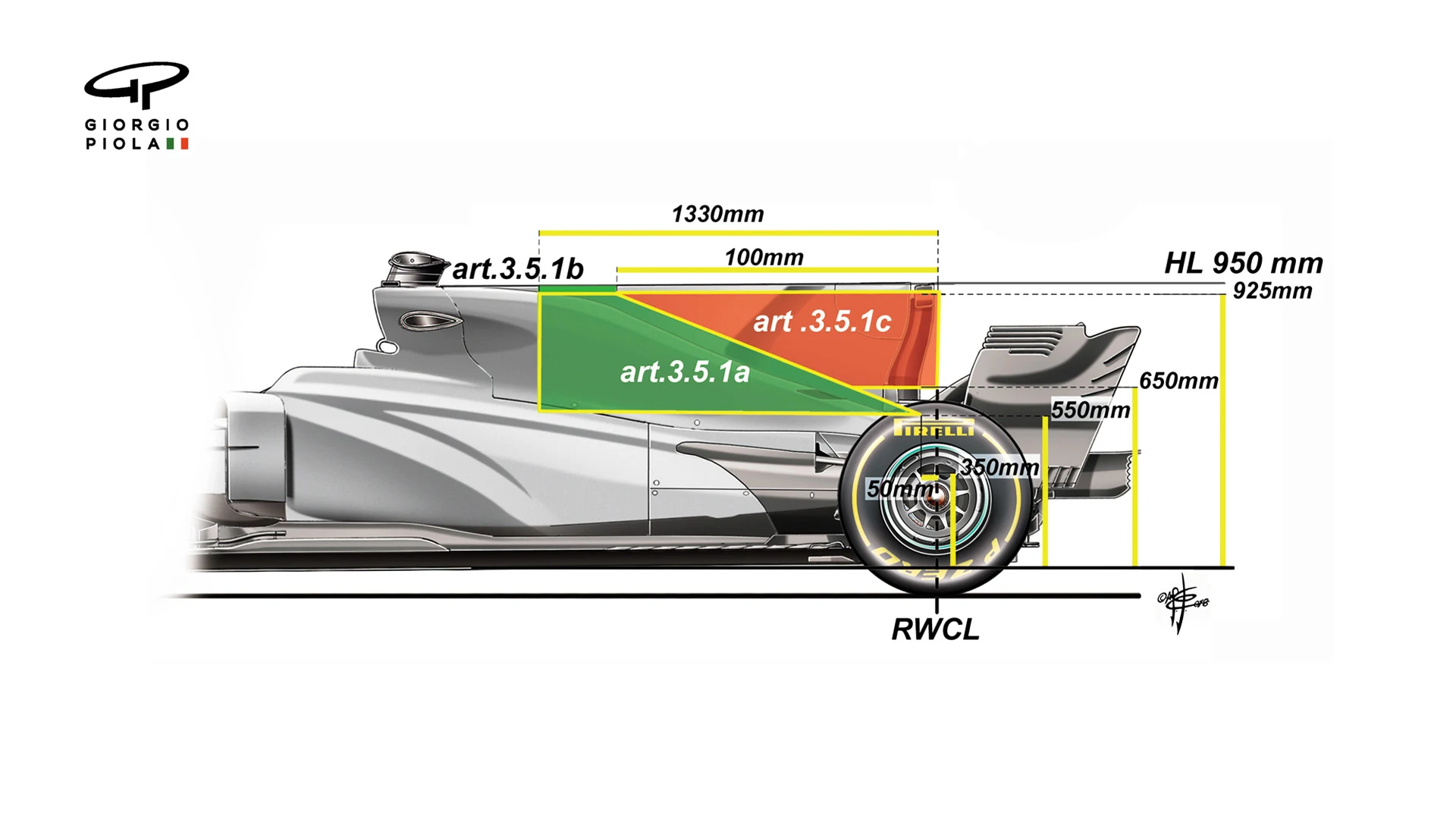Changes to the technical regulations for this season dictate that 2018’s cars will not feature the shark-fin engine covers and accompanying T-wings that became such a common sight last year. However, that may not mean we have seen the last of the latter…
In the drawing below, the green and orange highlighted areas show where bodywork is restricted under the 2018 technical regulations. These were less restricted last year: which led to the loopholes responsible for the emergence of the shark fins and T-wings.
However, even with the tweaks to the rules there remains an area – immediately between the rear wheels where the aforementioned green and orange areas intersect – that can be exploited by the teams. And it’s one that has already been used – by Williams last season.

In addition to the high T-wing seen on most 2017 cars, Williams developed this second, lower element on their FW40 in order to help channel airflow to the rear wing and improve the efficiency of the rear diffuser.
Such a solution remains legal under the revised regulations, so with teams keen to claw back as much downforce as possible – especially with monkey seat rear wings now effectively outlawed – don’t be surprised to see plenty of innovation in this area on 2018’s new cars.
Here's what the Williams looked like last year, with both T-wings in place...

Next Up
Related Articles
.webp) 7 things to be excited for in the 2026 F1 season
7 things to be excited for in the 2026 F1 season.webp) ExclusiveZhou on why he has ‘high trust’ in Cadillac project
ExclusiveZhou on why he has ‘high trust’ in Cadillac project/16x9%20single%20image%20(3).webp) Exclusive‘I'm used to being thrown in the deep end’ – Lindblad
Exclusive‘I'm used to being thrown in the deep end’ – Lindblad.webp) ExclusiveLowdon on why Zhou ‘ticked all the boxes’ for Cadillac
ExclusiveLowdon on why Zhou ‘ticked all the boxes’ for Cadillac F1 AcademyThe best off-track stories of the F1 ACADEMY season
F1 AcademyThe best off-track stories of the F1 ACADEMY season All the 2026 F1 driver numbers confirmed in full
All the 2026 F1 driver numbers confirmed in full
